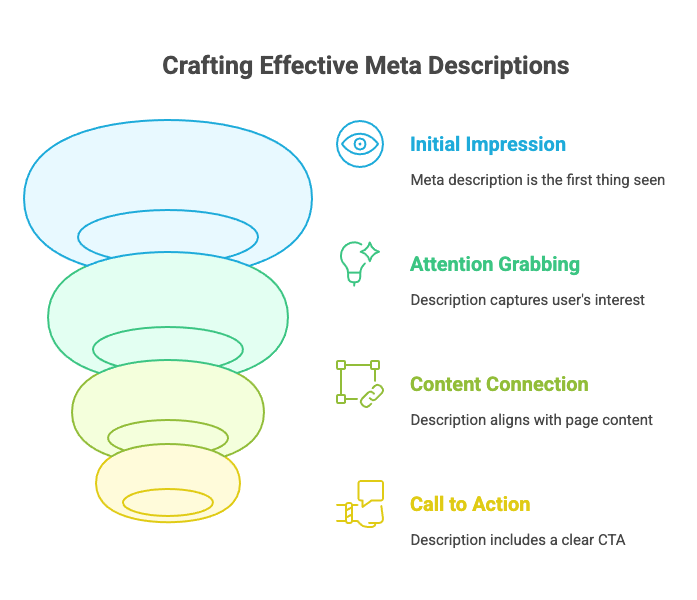Although Google’s algorithms don’t seem to have much use for meta descriptions anymore, that doesn’t make them any less valuable to you as a content creator.
Often, a meta description is the first thing a user will see of your site; it’s quite literally the first impression you’ll make on your readers. You need make sure it’s well-written.
Otherwise, you’re very likely to miss out on a significant amount of traffic.
The first piece of advice I’ll give you where your meta description is concerned is to keep it short and concise. Largely, this is due to the character limit Google’s engine places on its search results; anything longer than 160 characters is cropped out.
There’s a very good reason for this, of course: the process by which a user on Google decides whether or not to visit a site generally happens in a matter of seconds. They’ll glance at the title, look at the description, and then either click or move on.
Because this happens so quickly, people tend to lose anything longer than a sentence or two in the noise.
With this in mind, it should also go without saying that your description needs to grab the user’s attention in some way. Ask yourself what users visiting a particular page are going to be looking for, and compose the copy accordingly.
Your description should consist of three main components: a description of your page, what the page offers its audience, and some sort of call to action (for example, “50% off for new users”).

A decent call to action!
You do need a good call to action. However, the second point is most important. Furthermore, it’s likely the hardest to achieve. Ask yourself: What would I look for if I were the user?
Then, do your best to show that you can provide that. To that end, I’d recommend looking at a few competing sites. See how they describe themselves. Look at their meta descriptions. Finally, write something better.
It’s also crucial to ensure your meta description strongly connects to your page’s title. It should also connect to the page’s topic. While you must avoid keyword stuffing (seriously, it’s a very bad idea given the limited space), your description needs to include something.
This something should link it to both your page title and the content on that page. Failure to see to this will lead to a disconnected, boring, and irrelevant meta description.
Above all, keep it conversational.
Your meta descriptions should feel natural. In other words, they should sound like someone is narrating them to the audience.Therefore, keyword stuffing is a bad idea. Because people will very likely skip over anything awkward, mechanical, or poorly written. Write with a friendly tone and keep your language simple and welcoming.
Your meta description is the first thing your audience is going to see. If you don’t put your best foot forward, how will people know you can offer them what they’re looking for?
Just like a customer won’t go into a store if the greeter is unwashed, hostile, and inarticulate, people aren’t going to visit a site whose meta description is poorly worded.
Work to make your description a friendly doorman instead of a hostile oaf. Otherwise, people are simply going to visit someone else’s site.




